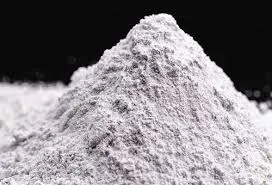
Dec . 01, 2024 17:22 Back to list
hydroxyethyl cellulose thickening mechanism
The Thickening Mechanism of Hydroxyethyl Cellulose
Hydroxyethyl cellulose (HEC) is a versatile non-ionic biodegradable polymer derived from cellulose, and it plays a crucial role as a thickening agent in various industries, including food, cosmetics, pharmaceuticals, and construction. The unique thickening mechanism of HEC can be attributed to its molecular structure, hydration properties, and interaction with solvents. This article delves into the complexities of how HEC functions as a thickener.
Structure and Properties
HEC is synthesized by the etherification of cellulose, leading to the introduction of hydroxyethyl groups into the cellulose backbone. This process enhances the solubility and water retention ability of the polymer. The hydroxyethyl groups provide HEC with excellent hydrophilic characteristics, allowing it to dissolve easily in water, forming a gel-like viscous solution. The ability to modify the degree of substitution of hydroxyethyl groups enables manufacturers to tailor HEC for specific applications, influencing its thickening efficiency.
Hydration and Viscosity Development
Upon dispersion in water, HEC undergoes hydration, which is critical for its thickening properties. The polymer chains align and swell as they attract water molecules, creating a network of hydrated cellulose chains. This interaction significantly increases the viscosity of the solution, an essential feature for applications requiring stability and product consistency.
The thickening effect can be attributed to two main processes entanglement and hydrodynamic interactions. The entanglement of HEC chains occurs as the hydrated polymer molecules intertwine, forming a three-dimensional network. This network restricts the flow of the liquid, thereby increasing the viscosity of the solution. Furthermore, hydrodynamic interactions arise as the movement of solvent molecules is hindered by the presence of the polymer, further contributing to the thickening effect.
hydroxyethyl cellulose thickening mechanism

Influence of Concentration and Temperature
The thickness imparted by HEC is also influenced by factors such as concentration and temperature. Generally, higher concentrations of HEC lead to greater viscosity. However, it is essential to note that there is a specific concentration range within which the thickening properties are maximized. Above a certain concentration, the solution may experience shear thinning or a decrease in viscosity under stress, which can impact performance in practical applications.
Temperature is another critical factor that influences the viscosity of HEC solutions. As the temperature increases, the viscosity of HEC solutions typically decreases due to the reduction in water's viscosity and enhanced chain mobility of the polymer. Conversely, cooling the solution can lead to increased viscosity as the polymer chains become less mobile and the polymer network tightens.
Applications in Industries
The thickening mechanism of HEC has made it an invaluable additive in various industries. In the food industry, HEC is used to stabilize emulsions, increase the texture of sauces and dressings, and improve the mouthfeel of products. In cosmetics, it serves as a viscosity modifier in lotions, creams, and gels, enhancing product stability and application ease. The pharmaceutical industry utilizes HEC for formulating controlled-release drug delivery systems, improving the bioavailability of certain medications. Moreover, in construction, HEC is used in cement-based products to enhance workability and water retention.
Conclusion
In summary, hydroxyethyl cellulose is a highly effective thickening agent due to its unique structure, hydration behavior, and interactions with water. Understanding its thickening mechanism is vital for optimizing its use across a myriad of applications. As research on HEC continues to evolve, its versatility and adaptability promise to meet the ever-changing needs of various industries, ensuring its relevance in technological advancements and product innovation. With a focus on sustainability, the continued use of biodegradable materials like HEC highlights the shift towards eco-friendly solutions in modern manufacturing processes.
-
Unlocking the Benefits of HPMC Products: A Gateway to Versatile Applications
NewsAug.07,2025
-
Unleashing the Potential of HPMC Ashland: A Comprehensive Look
NewsAug.07,2025
-
Tile Bonding Cellulose: The Key to Superior Adhesion and Durability
NewsAug.07,2025
-
Hydroxypropyl Methylcellulose Powder: The Versatile Component in Modern Pharmaceuticals
NewsAug.07,2025
-
Hydroxyethyl Cellulose: The Versatile Solution for Various Industries
NewsAug.07,2025
-
Hydroxyethyl Cellulose (HEC): The Versatile Polymer for Various Applications
NewsAug.07,2025







